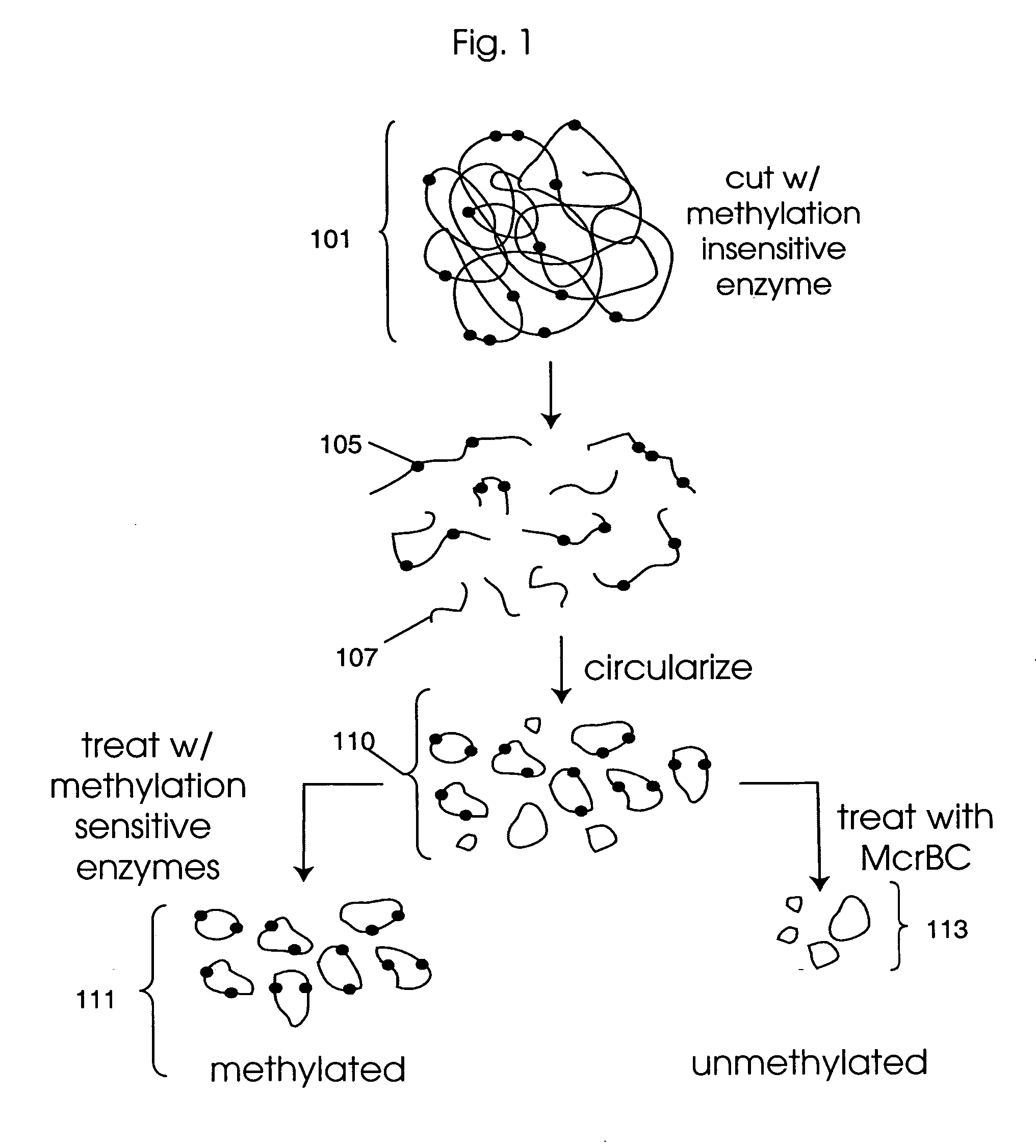Analysis of methylation using nucleic acid arrays
a nucleic acid array and array technology, applied in the field of methods for detecting methylation using arrays of nucleic acids, can solve the problems of genomic instability, alterations in the normal methylation process,
- Summary
- Abstract
- Description
- Claims
- Application Information
AI Technical Summary
Benefits of technology
Problems solved by technology
Method used
Image
Examples
example
Methylation Based Enrichment by Fragmentation and Circularization
Step 1: ApoI Digest
[0157] Mix 20 μl 10× NEB Buffer #3, 2 μl 100×BSA, 7.14 μl genomic DNA (1.4 μg / μl), 160.86 μl H2O and 10 μl ApoI. Mix the reaction well by flicking the tube. Spin down briefly. Reaction can be split into two tubes. Incubate at 50° C. for 6 hours in a PCR machine with heated lid. Heat inactivate at 80° C. for 20 minutes. Store at −20° C.
Step 2: Circularization.
[0158] Take 35 μl of the ApoI digest from above and incubate at 45° C. for 10 min. Snap chill on ice. Thaw ligase buffer. Keep on ice. Make 1× ligation buffer by putting 1406.1 μl of water in a new tube and chilling to 16° C. Add 160 μl of 10× ligation buffer to the water and return to 16° C. Briefly spin the digested DNA and add 32 μl to the 1× ligation buffer. Mix well, spin briefly and return to 16° C. Add 6.4 μl of ligase (2000 u / ul). Mix well by inverting the tube several times. Incubate at 16° C. for 15 minutes. Heat inactivate at 65...
PUM
| Property | Measurement | Unit |
|---|---|---|
| temperature | aaaaa | aaaaa |
| temperature | aaaaa | aaaaa |
| temperature | aaaaa | aaaaa |
Abstract
Description
Claims
Application Information
 Login to View More
Login to View More - R&D
- Intellectual Property
- Life Sciences
- Materials
- Tech Scout
- Unparalleled Data Quality
- Higher Quality Content
- 60% Fewer Hallucinations
Browse by: Latest US Patents, China's latest patents, Technical Efficacy Thesaurus, Application Domain, Technology Topic, Popular Technical Reports.
© 2025 PatSnap. All rights reserved.Legal|Privacy policy|Modern Slavery Act Transparency Statement|Sitemap|About US| Contact US: help@patsnap.com



